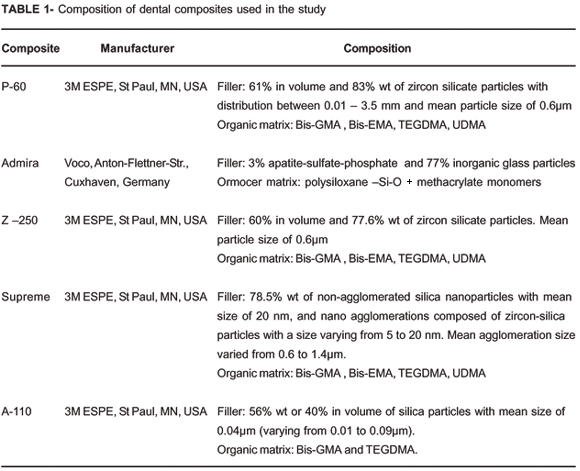OBJECTIVE: This study evaluated the depth of cure of five dental composites submitted to different light-curing modes. MATERIAL AND METHODS: Canal-shaped cavities with 5mm of length were prepared on the buccal surfaces of extracted third molars, and restored using P-60, A-110, Admira, Z-250 and Supreme resin composites. Materials were light-cured from the top, according to three modes (Group 1- Conventional (C): 500 mW/cm² / 40 s; Group 2 - Soft-Start (SS): 250 mW/cm²/ 20 s + 500 mW/cm²/ 20 s + 500 mW/cm²/ 10 s and Group 3 - LED: 250 mW/cm²/ 40 s). After that, cavity longitudinal surfaces were polished and marked with a millimeter scale of 4mm of length. Depth of cure was evaluated by means of Knoop hardness number (KHN), so that five indentations were performed at each millimeter. Original data were submitted to three-way ANOVA and Fisher's LSD test (alpha = 0.01). RESULTS: All materials presented a significant reduction on KHN from first to third millimeter. Regarding depth of cure, the results obtained for Conventional and Soft-Start modes were similar, but statistically superiors to those found for group 3 (LED). CONCLUSION: This performance may be related to the differences among energy densities obtained with different light-curing modes.
Composite resins; Depth of cure; Light curing modes; Softstart polymerization; Microhardness



